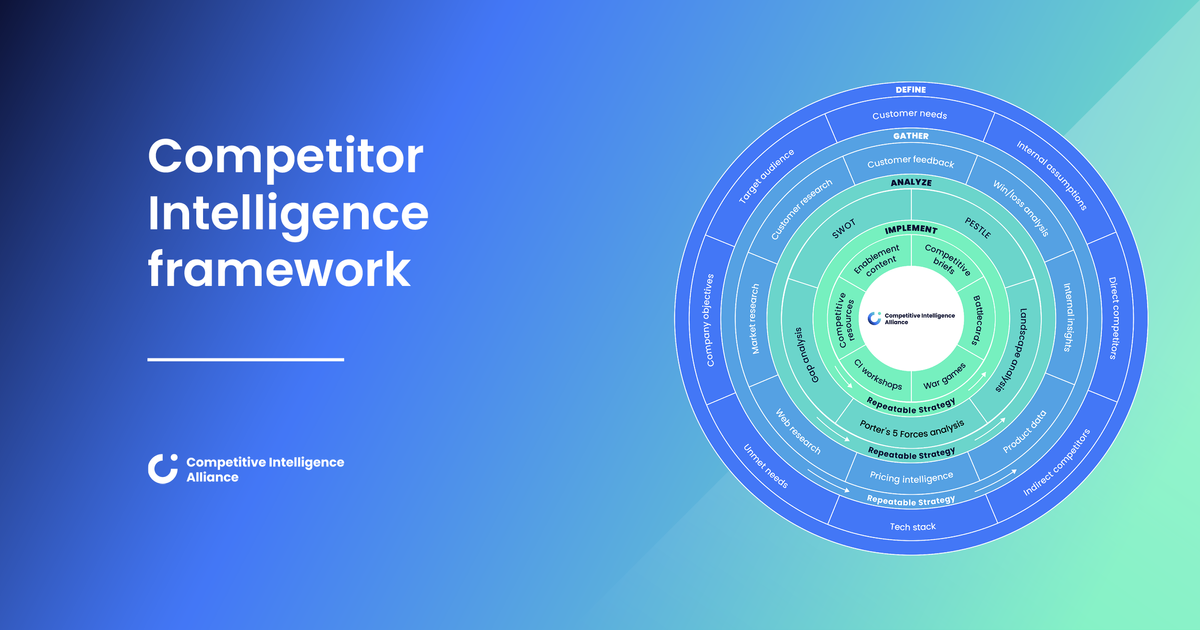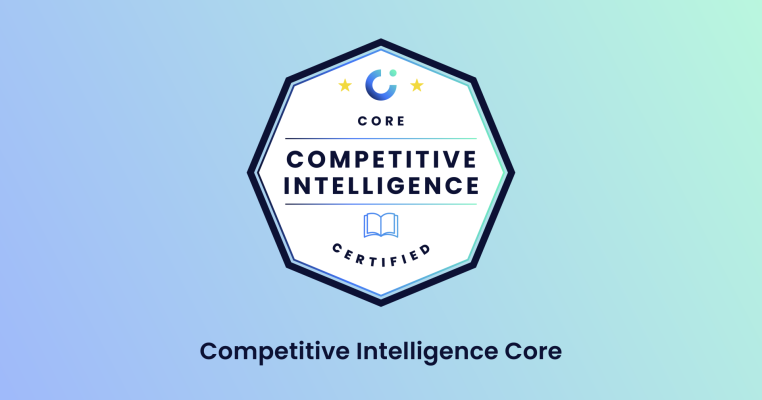What is PESTLE analysis?
A PESTLE analysis (or PESTEL analysis, sometimes simplified to PEST analysis) is a strategic planning framework that has you examine six types of external factors that can impact an organization: Political, economic, social, technological, legal, and environmental factors.
PESTLE analysis gives you context for your strategic decision-making, which you can use to improve your strategic plans.
The six components of PESTLE analysis
PESTLE analysis has you break down the external factors that impact your organization into six categories.
When performing the analysis, you’ll consider how the current state of each of these buckets might impact your business, its profitability, and its prospects in the short and long term.
Let’s examine each one in detail:
- Political factors.
- Economic factors.
- Social factors.
- Technological factors.
- Legal factors.
- Environmental factors.
Political factors
Political factors encompass everything from government policies to political unrest.
If one country’s government doesn’t see eye-to-eye with the government of another, this might affect your decisions on whether to do business internationally with suppliers located in that country.
As another example, the breakdown of relations between governments can lead to changes in international trade policy. These changes might make it harder for you to sell your products overseas.
The relative political stability of a country also matters. An organization looking to go multinational is unlikely to choose to set up a sister office in a country dogged by political unrest.
Consider:
- Presence and strength of international trade agreements.
- Governmental policy incentivizing or limiting business activity.
- Political unrest vs. political stability.
Economic factors
PESTLE’s Economic category concerns everything to do with the economy of your own country, countries you do business with, and countries where a large percentage of your target market resides.
For example, fluctuating exchange rates should be of particular interest. If your organization is in the U.S., and you do frequent business with the United Kingdom, the strength or weakness of the GBP/USD exchange rate will impact your business decisions (and your bottom line.)
The economic policy of any country of interest, decided by their Central Bank, might also factor into your strategic plans. Interest rate hikes attract money from overseas, but also affect consumer attitudes toward spending.
Also, if labor is cheap in another country, or you can source crucial materials more affordably there, it might serve as a cost-effective base of operations for you. Planning to open up shop there could be a great strategic decision.
Here’s a short list of economic factors to consider:
- Strength/weakness of relevant currencies.
- Inflation and interest rates.
- Labor costs.
- Unemployment rates.
- Economic growth vs. recession.

Social factors
The court of public opinion matters.
It decides what’s in or out of favor at that moment. If you’re caught up in controversy and the public’s judgment doesn’t fall in your favor, wider consumer attitudes towards your brand, your products, and, ultimately, your bottom line are bound to be affected.
You can take a more granular approach to the social factors of a PESTLE analysis by incorporating what you already know about your established market segments .
For example, factors like level of education, age, and disposable income can influence who you decide to market to most heavily. Or whether there are specific times of the month or year when certain market segments are most open to receiving your messaging and spending with you.
Other social factors to consider include:
- Accepted norms vs. taboos.
- Immigration and emigration, and what that means for your targetable demographics.
- Levels of unemployment.
- Social mobility and associated beliefs.

Technological factors
We all know it: Technology has the power to disrupt.
It can change entire industries, render entire job roles obsolete, and make the once-impossible possible.
New technologies can help you, or they can hurt you.
They can automate processes , making your entire operation more efficient. Or they can offer high-tech alternatives that leave your products and services obsolete in the eyes of the consumer.
So they should certainly factor into your strategic planning sessions.
But, since new technology is inherently unpredictable, it’s difficult to make accurate predictions.
So here’s how to approach this: Of all the infinite things that could happen, what finite selection of these things is most likely to happen? In addition, what one or two other things, though unlikely, would be so catastrophic (or miraculous, when they constitute opportunities rather than threats) should they occur, that you’d be mad not to give them a place in your plan?
Deal with these things.
Here are some technological factors to consider in your PESTLE analysis:
- Emergence of new technologies and how they might affect the ways you do business.
- Technology that enables vs. technology that inhibits or challenges.
- Software vs. hardware advancements.
- Consumer technology devices and usage.
Legal factors
The legal factors in a PESTLE analysis are those that influence how you run your business and, as a result, your associated costs and profitability.
Legislative bodies can pass laws that, for example, make it harder for you to break into a new industry.
Your products might suddenly need to pass stringent tests before they can go to market, for instance. Creating models capable of passing those more stringent tests can be expensive.
Or, a new law could make it hard or impossible for you to market to a certain group of people who’ve so far made up the majority of your target demographic.
Here are some legal factors to consider during your analysis:
- Laws that limit or enable competition and competitive diversity.
- Health & safety legislation that might affect your responsibilities to your employees or customers.
- Laws on compensation requirements (like the minimum wage).
- Antitrust laws.
- Data protection laws.
- Advertising standards.
Environmental factors
Finally, we come to the environmental factors.
Here’s an example: Solar panel manufacturers are much more likely to have success in sunny states like Nevada or California than in Washington. In fact, this manufacturer might deprioritize entire countries, like the infamously overcast U.K., in favor of sunnier locales.
The potential for natural disasters might also factor in. Areas that experience a lot of earthquakes might make up the entire target market for an organization that specializes in building earthquake-safe structures. But this org might not have a presence at all in countries that never experience earthquakes.
Other considerations, like waste management and emissions, as well as related taxation or incentives, should factor into your strategic plans.
Here’s a short list of other possible environmental factors to think about:
- The potential for natural disasters in or near a place of business.
- Prevalence and emergence of disease (possible and actual).
- Sustainability responsibilities, such as recycling and waste management, or emissions targets and related taxation or incentives.
- Concern for endangered species and all wildlife.
Looking for next steps?
Competitive intelligence is a powerful growth lever for any organization... if done right.
There are many concepts to master if you're to satisfy your customers, motivate your team, and optimize your workflows.
Enter our Competitive Intelligence Framework. 🏁
It covers everything you need to know to navigate the competitive intelligence cycle, from start to finish.

PESTLE analysis: advantages and disadvantages
We’ve covered a lot so far already. Before we get stuck into how to actually perform one, it’s worth briefly going over some of PESTLE analysis’ core strengths and weaknesses.
This will help you decide when it’s appropriate to use it,
What are the advantages of PESTLE analysis?
- Goes in-depth on external macro factors that can play into longer-term industry trends.
- Provides context on your strategic business decisions.
- Helps you identify both threats and opportunities in your competitive landscape.
- Fits neatly into other frameworks, like SWOT analysis , for examination of external factors.
What are the disadvantages of PESTLE analysis?
- Only deals with external factors.
- Combine with other frameworks, like SWOT analysis, for best results.
- Difficult to perform. How do you foresee all the possible factors? What if you miss something?
- Won’t help you identify existing blind spots, which can render your analysis less effective.

How to do a PESTLE analysis
Okay, so we’re familiar with each of PESTLE’s buckets, and what might factor into each one.
What does the process for performing a PESTLE analysis actually look like?
The good news is, the process for performing PESTLE analysis is much the same as for performing any kind of competitive analysis or for facilitating strategic planning .
Here’s the seven-step process:
- Establish goals and objectives.
- Prepare.
- Collect data.
- Analyze collected data.
- Create a response plan.
- Operationalize and action your strategic plan.
- Monitor and adjust.
1) Establish goals and objectives
As with any analysis, your first step is to get crystal clear on what it is you want to accomplish.
Are you trying to establish a competitive advantage? If so, you’ll be interested in the opportunities and threats your competitive environment has to offer. PESTLE analysis can clarify where these lie, and how to exploit them.
Are you trying to get a handle on where the market might be headed? Brainstorming through the six components of PESTLE analysis can help you get ahead of industry trends and anticipate key market events.
Getting clear on your primary objectives as your first step will inform the rest of your analysis, so don’t skip this part.
2) Prepare
Next up, it’s time to prepare.
Any analysis like this is time-consuming. While you can perform PESTLE analysis in microcosm – brainstorming on your own – you’ll get the best results if you involve people or teams from across the business, even if only in a small way.
And if you’re involving a lot of other people, you’ll need to be respectful of their time, which means figuring out an efficient way to canvass them all and get their input.
Interviews, surveys, and even a general call out on Slack or Teams for input can work.
At this point, you’ll want to take care of tasks like:
- Gauging interest and availability for interviews or meetings.
- Booking out meeting rooms.
- Sending out calendar invites.
- Deciding on questions and creating survey forms.
- Sending necessary messages.
- Creating and assigning other miscellaneous tasks.
3) Collect data
Now it’s time to collect the data.
If you’ve got time, collecting case studies is a hugely useful exercise.
Records of specific events in the recent past, and how they affected your org (or another organization you or someone else used to work at) make for great learning opportunities and will help you forecast future events.
By this point, everything should be set up, so all that’s left for you to do is ask your questions, hold your meetings, and collect the necessary data.
4) Analyze your data
With your data collected, it’s time for the actual analysis to begin. The goal here is first to process all of your information, and then to tease out meaningful conclusions. You’re looking to answer this question:
What do your findings mean for your business?
Chances are, much of the data you collect will be text-based… but – wait!
You don’t have to do all the data processing yourself. Remember, just as technology can disrupt, it can also enable. Generative AI is the perfect tool here for helping you whip through text data, structured data, and even numeric data at super speeds.
Here’s an example workflow:
- Have an automated transcription tool note down everything said in all your meetings.
- Offload it to your chat-based AI of choice for aggregation, deduplication, and summarization.
- Your AI tool already knows what PESTLE analysis is, so ask it to run one on the information you’ve given it.
Your AI’s conclusions can serve as the basis of your own analysis, or as a handy second opinion, depending on how much you trust AI tools.
That means the AI, accessible by billions of people, knows and can share proprietary information about your business.
Whether you use AI, a human assistant, or your own brainpower to digest all that intel, you end this step when you’ve pored over everything, and drawn meaningful conclusions about what it all means for your org.
5) Create a response plan
Now that you know what your findings mean for your business, you can figure out what to do about them.
While the data gathering and data analysis parts of the process are time intensive, it’s perhaps this step that’s most important.
Your response plan should be based on your conclusions about what the data you’ve uncovered means for your business. And, of course, this should be informed by, and aligned with, the key objective for the analysis you outlined right at the start.
For any decisive conclusions you’ve reached (like opportunities, or looming threats you need to address), figure out what needs to be done and break this down into a series of actionable steps.
These action points form the basis of the next stage…
6) Operationalize and action your strategic plan
So you know what needs doing.
All that’s left is to translate your steps into your project management software.
This way, everything gets tracked. Every task has its details and an assigned owner. Build project boards where necessary with dependencies between tasks, so there’s visibility into any issues or blockers.
For more on this, check out: How to operationalize a strategic plan.
7) Monitor and adjust
No plan can be perfect.
So build flexibility into the plan as a core feature from the start.
Don’t make your plan, its due dates, its action steps so rigid the whole thing falls apart if a prediction doesn’t come to pass, or a primary deadline gets missed.
Monitor the progress and effectiveness of your strategic plan as time passes. Accept it, with all its imperfections, and make the necessary adjustments to maximize your competitive advantage and exploit every possible market opportunity.
TL;DR
Phew. 😮💨
We’ve covered a lot… let’s sum up!
🌍 PESTLE analysis sees you examine six external macro factors (Political, Economic, Social, Technological, Legal, Environmental) that affect your organization.
The framework helps provide context for your strategic planning and business decision-making.
💰 For economic factors, keep an eye on exchange rates, inflation, interest rates, labor costs, and economic policies. They can directly influence your bottom line.
🧲 Remember that new technology can help, or it can hurt. Ask yourself whether any emerging technologies could automate your processes, or otherwise save you costs.
💼 When performing a PESTLE analysis, begin with the end in mind. Figure out where you want to get to before you start, and consider employing an AI tool to help you digest all that data.
Give yourself an unfair advantage
Our newest competitive intelligence course lifts the lid on the frameworks and processes experts use to deliver impactful intel with confidence.
You can expect:
- A 100% self-paced and online course packed with competitive wisdom so you can stop worrying and start winning.
- Bonus features from established competitive professionals to give you an unfair advantage.
- 6 downloadable, customizable templates and frameworks that make analysis a cinch.

Competitive Intelligence: Core
We'll show you how to:
- 👑 Lead development of your org’s all-important competitive positioning.
- 🦾 Master CI’s essentials, including its most powerful research techniques.
- 🚀 Arm sales and customer success with intel to skyrocket win rates and turn down churn.
- 🧠 Offer leaders critical intel that informs their decision-making and strategy.
- 📈 Elevate CI’s role within your org to ensure career progression.






.png?v=09cf73b4b5)